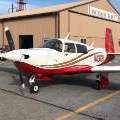How Much Ice, How Much Trouble?
-
Members Online
- Paul Thomas
- Jackk
- daytonabch04
- Justin Schmidt
- GeeBee
- takair
- Mister_Bevilaqua
- KZNY
- skydvrboy
- Tommooney
- marcusku
- 47U
- neilpilot
- Mooney in Oz
- redbaron1982
- Nathan211
- ad5ut
- ElkoRandy20J
- flewmanchu
- atpdave
- mccdeuce
- Rick Junkin
- ta2too
- Trogdor
- Fly Boomer
- EricJ
- FlyingScot
- hammdo
- Josh Cross
- highflyer77
- natdm
- 67 m20F chump
- Jim Peace
- dc0341
- MikeOH
- TheAv8r


Recommended Posts